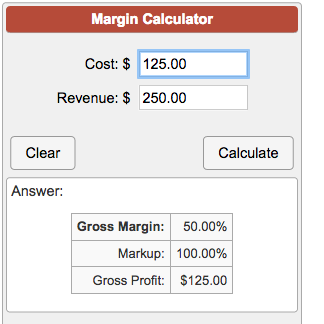
Margin is the amount of funds lent you by your broker to buy or short stocks or any other financial instruments. It's a sort of loan, which you have to pay interest on.
Margin calculations in forex are a deposit that a trader puts up in order to secure a position. Think of it as collateral—it's not a fee or a cost, but it ensures that your account can handle whatever trades you are making. The margin that you have to put up entirely depends on the amount that you're trading. It's important not to put too much on margin, because otherwise you'll lose everything if your trades prove to be duds. Trading on margins is a big part of why stock dealers in the Crash of 1929 lost so much—make sure you keep that in mind while forex trading.
The formula for calculating the margin for a forex trade is simple. Just multiply the size of the trade by the margin percentage. Then, subtract the margin used for all trades from the remaining equity in your account.
[Principal Margin Loan Amount * Margin Interest Rate] / 365 * [ number of days on margin] = Margin Due
Example:
$20,000 Margin Balance x 6% Margin Rate = $1,200. $1,200 / 365 = $3.29 in margin interest expense daily x 7 days margin = $23.03 Due.
If your trying to figure out how much margin you have available on a specific stock and it's marginability you base it on which type of margin your paying. Exchange based or house rules. This depends in each brokers internal rules. Exchange might be 20%, whereas the broker might be 35%. This is arbitrary per their perceive risk of a security. Margin requirement is lower on treasuries and munis vs biotech stocks for example. Also buying power and margin are entirely two different things. I would watch videos or call your broker to have it explained and look for worse case scenario when making decisions. It's too hard to cover here. I bet the CBOEs site has lots of good info. Also check Investopedia for calculations and correct info.
Once you have their number it gets tricky as it's a moving target and settled at the end of the day. I make it a point to call or download a spreadsheet that can tie into your accounts positions via macro or use IB or TradeStation which is real time calc in account balance screen. I typically spread accounts based on margin ability and match those together in basket trading accounts to make it easier to eyeball intraday, but this takes years of practice so get a real time tool you can rely on via your broker and split assets away for clear headed trading or you'll screw up if you haven't learned and mastered these things externally. There are third party tools that can plug into platforms as well if your brokerage lacks the sophistication to display real time info. There are also spreadsheets online if you need a single, quick and easy calc.







